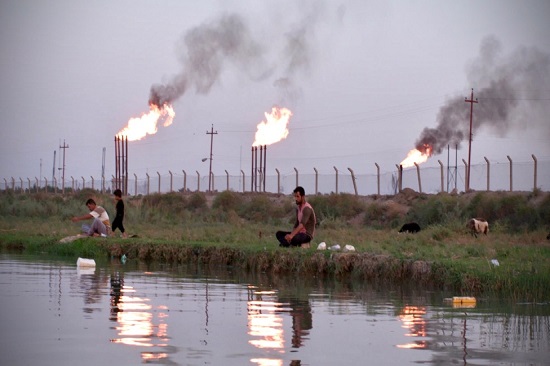| News Details |
Introduction of a program to monitor emissions of harmful gases to the environment
2024-05-25

In implementation of the strategic plan of the University of Anbar and the plans of the Upper Euphrates Basin Developing Centre to achieve the goals of sustainable development and Vision 2030, especially those related to the eleventh goal (sustainable cities and communities), and the thirteenth goal (climate action), and the required monitoring and measurement of gas emissions and their impact on climate change, the centre has developed a program to monitor and observe gas concentrations in Iraqi airspace through satellites, which provides researchers with the possibility of the highest polluted areas and lay the foundations necessary to address them and determine the efficiency of the applied solutions.
Assistant Professor Dr. Ahmed Jassam Mekhlef, a climate expert in the Natural Resources Development Department at the Centre, said that it is possible to know the concentrations of gases at different heights, for example, at ground level and an altitude of 100 m or more. The program adopted at the centre takes into account the concentrations at ground level being the most affecting humans, and the figures below show us (1,2,3) the percentage of carbon monoxide concentrations [COSC] in Iraq, for Thursday, 23/5/2024, as it appears most intense on the capital, Baghdad, It is produced by the process of partial oxidation (incomplete combustion of carbon), which is a highly toxic gas, and occurs when oxygen is scarce, or when combustions with very high temperatures, as this gas is emitted from the following sources: emissions from factories and cars, generators that run on gas or diesel, gas-fired stoves, gas water heaters, wood ovens, gas or coal-fired grills, gas-fired heaters, cigarettes.
Figures (6,5,4) show sulphur dioxide concentrations, which show that concentrations in the capital Baghdad are the highest due to the density of cars, factories and other human activities.
This program aims to provide detailed databases and various seasons and months of the year, in addition to the possibility of linking these data with the speed and direction of the winds, which means integrated data to monitor the impact of gas emissions and study the extent of the impact on climate change.
#university_of_anbar
#Upper_Euphrates_Basin_Developing_Center















